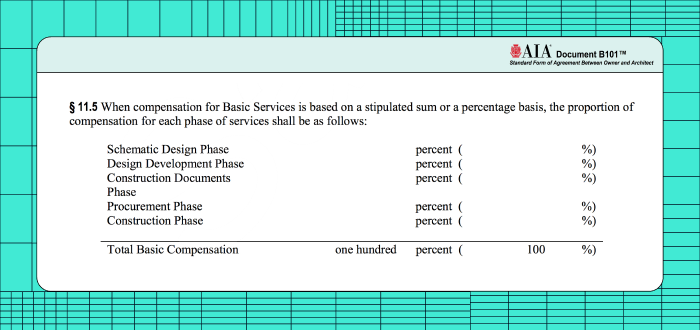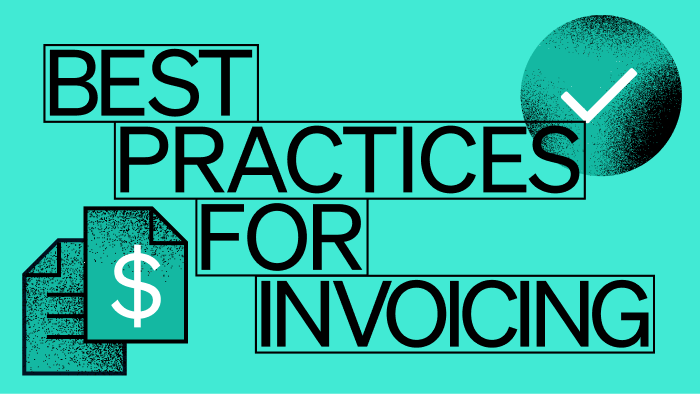Contents
Invoicing can be tedious, but it’s one of the most important steps you have to take to keep your firm in the black.
It can take hours pulling together:
- Timesheet data
- Project fees
- Percentage completion for each phase
Then you have to put everything in the correct format.
Not to mention making sure the invoice gets paid on time.
And now you have to do it for all 20 projects.
That’s a lot of manual work that could’ve been spent on billable hours.
This article will show you 9 best practices to improve your invoicing workflow. Let’s dive into it.
1 - Qualify Your Clients to Avoid Tedious Invoicing
Before you agree to work with a client, you should first qualify them.
For starters, if you have an ideal client in mind, be straightforward and list them on your website. Be upfront about the types of projects you want to take and work on.
Another good idea is to ask leads to select a range of their budget when approaching you through your contact form. This way, you know that they have the budget to pay you down the line.
You can also explain the invoicing process to them before they even sign the contract. If a client is nitpicking costs and asking you to create tons of task-based line items for each invoice, it could be a warning sign.
Here are some other questions to ask in the client qualification process:
- Who's the decision-maker? You need to determine whether you're talking to the person responsible for the project.
- What's your budget? This lets you know whether the client will have enough funds to pay for your architectural fee.
- Have you worked with an architectural firm before? This is important because it might reveal the client's expectations.
2 - Set Expectations at Client Onboarding
Once your client agrees to work with you, set expectations again about all the payments and invoice workflows in the form of a letter of agreement, which forms the basis for your contract.
Sometimes the best invoicing practice you should adopt starts before sending the bill to the client.
Being open and honest is the best way to keep the relationship healthy and your bills paid.
On your letter of agreement, clearly include:
- Billing timetable
- Fee structure
- Billing practices
- Scope of work
- Payment terms for your invoices
- Preferred payment method for invoices
3 - Define a Concise Billing Schedule
Try to create a clear invoicing workflow and timetable for your project owners and sub-consultants.
This helps you establish when your invoices should go out and when they should be paid.
It will help form healthy billing habits.
You should also include your consultants in the process if you’re contracting with them directly.
That way, you can ensure that everyone is paid on time.
Build your timetable into all of your agreements with clients and consultants. Make sure you collect from your clients before you pay your consultants.
If you are being asked for money but can’t settle the payments, that’s a negative cash-to-cash cycle and the first sign that your business is in trouble.
Keep your cash flow healthy through a sensible timetable.
4 - Pick the Right Fee Structure
Part of ensuring that your invoicing goes smoothly is picking the right fee structure and payment terms.

There are a few different options you can choose from:
- Lump-Sum: also known as fixed fee or stipulated sum, lump sum fee is offered to the client as a fixed sum of money that covers the architect’s services for the project.
- Percentage of construction cost: Some architects charges based on a certain percentage of the owner’s budget for the Cost of the Work (aka construction cost.) For many project types, architectural fees are moving into the 8% range and up according to Architectural Fees.
- Hourly rate: You can charge a fee schedule based on a hourly rate for different team members. There is usually a Not-To-Exceed limit included to keep within the budget and let your client know if a design change will impact the cost.
Whichever fee structure you picked, you’ll likely be billing phase-by-phase as shown in the AIA contract.

Once you have the right fee structure, it’s important to use a project management software that lets you create an invoice based on the fee structure you picked.
In response to the major differences in architecture invoicing and almost every other professional service, Monograph built an invoicing workflow specifically for architects.
Monograph invoices are structured phase-by-phase, meaning you can bill clients up to a certain completion percentage of each phase.

5 - Implement Monthly Payments
Part of keeping your firm healthy is maintaining your cash flow.
You can send progress payments or monthly invoices to keep your cash flow steady.
The AIA contract recommends progress payments be paid monthly.

Chances are your client will be happy, too—their bill will be split up in manageable chunks rather than big lump sums.
This means you don’t have to wait until the end of a project for a cash injection, and you can better manage the project’s costs.
6 - Create a Culture of Tracking Time
Only 60% of small firms track billable hours precisely (AIA Tech Culture Report.)

Tracking time can help you understand:
- How many hours are being spent vs hours planned
- What tasks might take longer than others
- What percentage completed are you in a design phase
- What to bill your client in an invoice
Most employees dislike filling timesheets since it’s typically a manual and tedious process.
Consider automating the time tracking process. Rather than having to record or remember all the ways that you spend time during the week, automatic time tracking reduces timesheets to a few clicks each time you switch activities.

7 - Using Invoicing Software for Accurate Billings
In the AIA Tech Culture Report, only 59% of firms say they are already using accounting-only solutions like Quickbooks for invoicing, while only 51% of midsize firms say they are using their tech tools fully.

Most architects we talked to don’t have a system in place to figure out how much they should invoice. Instead, they approach invoicing by combining hours logged and how far along they feel the project is.
This can lead to inaccuracies and often lost profits.
Look for a software solution that allows you to manage your time, projects and invoices on the same platform, like Monograph.
Rather than having all that rich time and project data live in a siloed system that you need to manually reference for invoicing, that data will be readily accessible for your invoices.
This means that you can:
- Turn time into fees to populate invoices automatically
- Create and send an invoice quickly
- Keep all your data in one place
- Run reports for all outstanding invoices to find out who hasn’t paid

“Monograph’s really streamlined our accounting because our accounting process was built around principals doing invoices, and then passing that off to Marie in Excel format to PDF to QuickBooks, back to PDF…That process is streamlined from 2 days down to two hours. So huge benefit for us.”
—Arthur Eddy, Traverse Landscape Architects
8 - Make It Easy to Pay You
You have to make it as easy as possible for a client to pay.
If your invoice is hard to read or understand, it might not get paid or paid correctly.
To make it simpler for your clients:
- Make the payment terms easy to understand
- Put the bank details and instructions on the invoice
- Clearly state the invoice amount on the document
- Offer direct payment methods digitally
Many accounting software solutions, including Quickbooks Online, have direct payment methods embedded in the solution.
This way, your clients can quickly pay electronically when they’re reviewing invoices online.
9 - Handling Client Queries
Even if you follow these guidelines, clients will question an invoice.
A signed agreement is your best defense—and the best way of keeping out of small claims court over your invoices.
This is why tracking time and documenting your work are so important.
It’s hard not to become defensive when someone queries your invoice.
Maybe the client doesn’t trust you, or they don’t know how these projects work.
Remember that you have nothing to hide.
See queries as an opportunity for dialogue and approach them with courtesy and transparency.
It’s also important that you have easy access to project financial information to share with the client and quickly clear up any misunderstandings.
Monograph, for example, allows you to get clear financial snapshots of your projects: previously billed, logged, and paid—all organized by phase.

Summing Up: Best Practices for Invoicing
Invoicing clients might be a tedious task, but it’s the best way of keeping your business healthy.
Project management and invoicing software can help you smooth out the invoicing process.
Sign up for a free trial to Monograph to use the right invoicing tools and make billing part of your culture.




